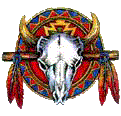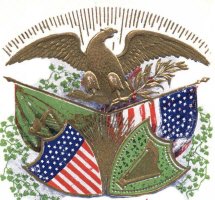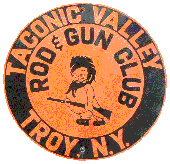|
Short History of Firearms
|
|
source: A History of Firearms
Maj. H.B.C. Pollard
|
|
275
|
Julius Africanus mentions the use of
"Shooting Powder".
|
|
668
|
Some sort of explosive powder is used
during the siege of Constantinople.
|
|
1044
|
Gunpowder-like mixtures containing
charcoal, sulfur, and saltpetre, are known
in China.
|
|
1200
|
Saltpetre, the principal ingredient of
Black Powder first appears in the writings
of Arabian, Abd Allah.
|
|
1232
|
The Chinese develope rockets and a weapon
called "Heaven-shaking Thunder".
|
|
1247
|
The first record of the actual use of
gunpowder in Europe is a statement by
Bishop Albertus Magnus in 1280 that it was
used at the Siege of Seville.
|
|
1267
|
English medieval scholar Roger Bacon writes
explicit instructions for Black Powder
preparation in his Opus Majus.
|
|
1270
|
Simple mortars began to see use on the
battlefield in Europe to fire rocks at the
enemy.
|
|
1280
|
The second kind of flying fire is made in
this way. Take 1 lb. of native sulfur, 2
lb. of linden or willow charcoal, 6 lb. of
saltpetre, which three things are very
finely powdered on a marble slab. Then put
as much powder as desired into a case to
make flying fire or thunder. Note; The case
for flying fire should be narrow and long
and filled with well-pressed powder. The
case for making thunder should be short and
thick and half-filled with the said powder
and at each end strongly bound with iron
wire.
~~Marcus Graecus, Liber
Ignium
|
|
1304
|
The Arabs produce the first gun, a bamboo
tube reinforced with iron that used a
charge of black powder to shoot an arrow.
|
|
1313
|
Franciscan monk Berthold Schwarz invents
gunpowder independently.
|
|
1319
|
Cannons are used at the siege of
Berwick-on-Tweed.
|
|
1324
|
Earliest record of European cannon made at
Metz.
|
|
1325
|
An illustration of a gun appears in the
Oxford manuscript De Officiis Regum.
|
|
1326
|
Cannon are used by the Florentines.
|
|
1327
|
Archdeacon of Aberdeen John Barbour states
that cannons (Crakys of War) were employed
in Edward IIIs invasion of Scotland.
|
|
1346
|
The battle of Crécy, France is the
first reported use of hand gonnes in
battle.
|
|
1347
|
English use cannon at siege of Calais.
|
|
1364
|
Hand Cannon appeare on the field of battle.
|
|
1375-97
|
Hand guns are known in England and Italy.
|
|
1380
|
The Harquebus is invented.
|
|
1399
|
Richard II of England reportedly takes
eight gonnes with stands and 200 rounds of
shot to Ireland.
|
|
1400
|
The first cannons are made of cast iron.
|
|
1411
|
An early version of the Matchlock, the
Serpentin is introduced in Spain.
|
|
1412
|
The first Chinese book detailing
proportions for black powder is written by
Huo Lung Ching.
|
|
1415
|
The Battle of Agincourt, France, made
famous in Shakespeare's play, "King Henry
V" occurs. Although the battle is famed for
the effect of the English archers, stories
concerning the use of English hand gonnes
also exist.
And that it was great pity, so it
was,
This villanous salt-petre should be
digg'd
Out of the bowels of the harmless
earth,
Which many a good tall fellow had
destroy'd
So cowardly; and but for these vile
guns,
He would himself have been a soldier.
~~ Shakespeare - Henry IV, Part 1, Act 1,
Scene 3
|
|
1424
|
The first mechanical device for firing the
hand gun makes its appearance.
|
|
1425
|
Armour is being penetrated by bullets and
the hand gun is showing signs of becoming a
weapon capable of rudimentary precision.
|
|
1426
|
The Burgundians from Burgundy mount the
first known notch-and-post sights on their
hand gonnes and arbalests.
|
|
1427
|
The pistala, meaning pipes, is developed in
Bohemia. These long- barreled handguns are
so named because of their resemblance to
whistles-pipes.
|
|
1429
|
Corned powder is developed and mentioned in
the Fire Book of Conrad von Schongau.
|
|
1430
|
Introduction of the Matchlock.
|
|
1448
|
After their archers are slaughtered in
battle by Hungarian firearms, the Ottoman
Janissaries switch from bows to hand
cannons and hand gonnes.
|
|
1450
|
The first cast-iron gun is introduced, the
"Mad Marjorie."
|
|
1485
|
Henry VII organizes the corps of Yeomen of
the Guard, half of whom are to carry bows
and arrows while the other half are
equipped with Harquebuses. This represents
the first introduction of firearms as an
official weapon of the Royal Guard.
|
|
1494
|
Charles VIII's French army invades Italy
with a highly developed artillery train and
guns mounted on carriages with trunions.
|
|
1498
|
Rifling is invented and the first known
rifle is made by William Renwick.
|
|
1517
|
The first Wheellock or "Rose Lock" is
invented by Johann Kiefuss of Nuremberg,
Germany.
|
|
1522
|
In an effort to reduce the continuing fear
surrounding the black magic of guns and
black powder, a Bavarian necromancer states
that rifles are more accurate than
smoothbores because the spinning bullet
doesn't allow a demon to gain purchase upon
it.
|
|
1540
|
The hair trigger is invented in Germany.
|
|
1547
|
The Archbishop of Mainz has two members of
a shooting club compete at 200 paces, one
using lead balls and the other balls of
silver blessed by the Church and etched
with cross. The silver balls all miss the
target while the lead balls scored hits on
19 out of 20 shots. This disproves the
theory put forth by the Bavarian of 1522
and causes the Church to declare that round
bullets can indeed be controlled by demons.
|
|
1560
|
The invention of the typical Spanish Lock
is attributed by some writers to Simon
Macuarte the Second.
|
|
1570
|
The Snaphaunce Lock, the forerunner of the
true Flintlock, is invented.
|
|
1586
|
Invention of the cartridge.
|
|
1612
|
The Flintlock is developed in France by
Marin le Bourgeoys who is assigned to the
Louvre gun shops by King Henri IV.
|
|
1616
|
Italian Giuliano Bossi invents the
double-barreled gun.
|
|
1630
|
The standard Flintlock gun is invented.
|
|
1640
|
The screw or cannon barrel pistol is
invented.
|
|
1675
|
The first powder mill on the continent is
opened in Milton, Massachusetts.
|
|
1689
|
The earliest known English breech-loading
rifle is made by Willmore, who was
apprenticed to Foad.
|
|
1690
|
The .75 calibre smooth bore "Brown Bess" is
known in Ireland as a "King's Arm" from its
use by William at the Battle of the
Boyne.
The entire English army is equipped with
flintlocks.
|
|
1730
|
The large box lock type pistol makes its
appearance.
A few hammerless flintlock sporting guns
are made by Stanislaus Paczelt, of Prague
in Bohemia.
|
|
1733
|

Kentucky Rifle
Skillful immigrant craftsmen from Germany
and Switzerland create the first truly
American firearm in Lancaster,
Pennsylvania, the state of the art Kentucky
rifle, also known as the Kentucky, the hog
rifle, or the long rifle.
|
|
1746
|
The French introduce the double-necked
hammer and the steel ramrod.
|
|
1750-65
|
The use of pistols for duelling purposes
becomes general as the practice of carrying
the rapier or small sword dies out.
|
|
1760
|
Double shotguns are rather peculiar arms,
usually of the under and over revolving
barrel type.
|
|
1763
|
The French introduce the muzzle band with a
funnel or guide for the ramrod and acorn
sight integral with the band.
|
|
1774
|
The chief army physician to Louis XV of
France discovers Fulminate of Mercury.
|
|
1777
|
Duelling pistols become officially
standardized weapons. It is laid down that
they should be 9 or 10 inch barreled,
smooth bore flintlocks of 1 inch bore,
carrying a ball of forty- eight to the
pound.
|
|
1780
|
The top rib in double-barreled guns
appeares.
|
|
1781
|
Spring bayonets are common on blunderbusses
and pistols of the period subsequent to the
date of the patent (John Waters, Pat. No.
1284).
|
|
1788
|
Frenchman C. L. Berthollet discovers
Fulminate of Silver by acting ammonia upon
precipitated silver oxide.
|
|
1789
|
Single trigger pistols, with side by side,
and also under and over barrels, are made
by Egg.
The first patent for single trigger locks
for double arms (James Templeman, Pat. No.
1707).
|
|
1792
|
Joseph Manton's first patent (No. 1865)
introduces the "break-off" breech, into
which the barrel fits with a lump instead
of being secured by a tang and screw as
previously used.
|
|
1795
|
The Springfield Armory is established.
|
|
1798
|
Barrels with a number and the letters D.C.
(Dublin Castle) are personal arms
registered at Dublin Castle after the
rebellion and disarmament of Ireland.
The first "gun registration" scheme in
Ireland to prevent gun violence, totally
failing for over 200 years, but politicians
want to try it in the U.S.
|
|
1800
|
White Chapel gun maker Ezekiel Baker
creates the "First Baker Rifle".
The first swivel ramrod is attached to the
piece by a stirrup.
The first half stocked pistol with the
lower rib beneath the barrel is fitted to
carry the ramrod.
Black Powder is standardized at 15/2/3 of
KNO/S/C.
|
|
1804
|
DuPont establishes his first powder mill on
Brandywine Creek, near Wilmington DE.
|
|
1805
|
The Reverend John Forsythe of
Aberdeenshire, England patents the
detonating or percussion cap principle.
|
|
1807
|
The "Second Baker Rifle" is issued.
|
|
1810
|
The revolving principle is as old as
firearms, but manufacturing methods
permitting sufficient accuracy of
workmanship and precision of boring for a
really safe cylindered or chambered weapon
come into being.
|
|
1811
|
The first serious military breech loader is
invented by American Colonel John H. Hall.
This is made first as a flintlock, then as
percussion, and is the first breech loader
officially adopted by any army. The
flintlocks were made until 1832, the
percussion model from 1831.
|
|
1815
|

Jake and Sam Hawken open their gunshop in
St. Louis. Hawken's "Rocky Mountain Rifle"
was used by many of the explorers who
opened up the West and is most sought after
by the Mountain Men.
The Wild still lingered in him and
the wolf in him merely slept.
~~Jack London
|
|
1820
|
The first true flintlock revolver is the
very rare weapon made by Collier.
|
|
1826
|
The percussion cap is in universal use on
private arms.
The Delvigne service rifle is invented in
France.
|
|
1830
|
The "Third Baker Rifle" is issued.
The back action lock makes its appearance.
|
|
1831
|
The Robert rifle is invented by Paris
gunsmith Robert.
The needle fire cartridge is patented by
Adolph Moser.
|
|
1835
|
The rim fire cartridge evolves naturally
out of the percussion cap, and is first
made by Flobert of Paris, a maker of saloon
arms.
Sam Colt claims the ratchet motion,
locking the cylinder and centre fire
position of the nipples as particular
points of his specification.
The Enfield percussion carbine .65 inch
calibre with hinged spring triangular
bayonet folding below the barrel is made
for Constabulary service.
Coach pistols supplied to the guard of
public stage coaches are extremely rare,
and are made with flintlocks and brass lock
plates.
|
|
1840
|
William Bush (Pat. No. 8513), introduces
the breech-loading needle gun
cartridge.
The Brunswick rifle supersedes the Baker
model.
|
|
1845
|
A double-barreled 26 inch barrel .67 inch
calibre armi is issued for constabulary
use.
|
|
1847
|
The pinfire cartridge is invented by the
Parisian gunsmith, Houiller.
|
|
1848
|
The classic Sharps rifle is patented.
|
|
1850
|
The shot-gun or fowling piece begins its
separation from the musket in the latter
half of the 18th century.
The Minie service rifle is introduced in
England.
|
|
1852
|

Mr. Jennings' rifle.
Charles Lancaster brings out his central
fire under lever gun with extractor and the
first true centre fire cartridge.
|
|
1853
|
The Pritchett bullet, a plain lead
cylindroconoidal plug with a shallow base
depression, is selected as the best type of
bullet for the new Enfield rifle. Later
this is superseded by the Enfield bullet.
|
|
1854
|
During the Crimean War, 25,000 Enfield
rifles are made in America. This war is the
last in which all combatants use muzzle
loaders.
|
|
1857
|
Whitworth rifles are produced.
|
|
1859
|
The first recorded European revolver for
central fire cartridges is patented by
Perrin and Delmas.
|
|
1860
|
Tyler F. Henry introduces the Henry rifle.
|
|
1862
|
The first effective and widely used
magazine repeater is undoubtedly the
Spencer breech-loading .52 calibre forged
steel barrel carbine.

The first Spencers used by Union soldiers,
which are bought privately or by individual
units, may have appeared on battlefields as
early as late spring 1862. By the end of
the war, 200,000 Spencer carbines had been
put into service.
The centerfire cartridge is patented by
George Henry Daw.
|
|
1863
|
The first central fire repeater, Ball's
carbine is made by the Lamson Arms Co.,
Windsor Vermont, U.S.A.
Metallic cartridges are widely introduced.
|
|
1866
|
The first cartridge repeater shot-gun is
introduced, the Roper.
The Snider service rifle is issued.
The Henry is merged into the Winchester
Company.
Claims have been made for an American
origin for choke boring, but these have
never been proved, and there is no doubt
that it was the invention of Pape of
Newcastle.
|
|
1869
|
The Martini-Henry rifle is issued.
The first European magazine military arm
is the Swiss Vetterli rifle.
|
|
1870
|
The Chassepot is authorized and all
branches of the French army are equipped
with the weapon.
|
|
1871
|
Theophilus Murcott invents the first true
hammer-less gun.
The Franco-German War is almost entirely a
breech-loading affair.
The National Rifle Association is founded.
|
|
1874
|
The Edge rifle (Pat. No. 3643) is the first
bolt action military repeater.
J. Needham introduces the cartridge
ejection system to double guns in the form
of a system designed for drop-down style
breechloader shotguns.
|
|
1886
|
Paul Vieille invents a smokeless gunpowder
called Poudre B. Made from gelatinized
nitrocellulose mixed with ether and
alcohol, it is passed through rollers to
form thin sheets, which are cut with a
guillotine to flakes of the desired size.
It revolutionizes the effectiveness of
small guns and rifles giving them an
accurate range of up to 1000 yards.
|
|
1887
|
Winchester repeating shot-guns are
introduced.
The Maxim is officially adopted by the
German army as a machine gun.
The French adopt the Lebel rifle and the
Gras-Kropatschek rifle is issued for the
French Marines.
|
|
1888
|
The Lee-Metford rifle is adopted by Great
Britain.
|
|
1889
|
Colt makes its first swing out cylinder
revolver.
|
|
1893
|
The first automatic weapon to appear on the
market is the Borchardt pistol.
|
|
1894
|
The Bergmann pistol and the first
Mannlicher automatic pistol are
introduced.
The United States Military adopts the
Krag-Jorgensen magazine-fed rifle,
chambered for .30-40 smokeless powder,
jacketed bullet.
|
|
1895
|
The .30-30 Winchester Smokeless cartridge
which carried the .30 W.C.F. (Winchester
Center Fire) designation on the head stamp,
first appeares in Winchester's August
catalog No. 55.
|
|
1898
|
The Browning automatic pistol, .32 inch
calibre, makes its appearance.
The Mauser combination automatic pistol or
carbine, the wooden holster serving as a
stock attachment, is introduced.
|
|
1903
|
The Winchester Firearms Company brings out
the first widely sold automatic rifle.
The Wright Brothers Fly.
|
|
1905
|
The Webley self-loading .455 inch calibre
pistol is adopted by the British Navy.
The pointed Spitzer bullet is introduced
in Germany.
|
|
1911
|
John Moses Browning's M1911 .45 inch
calibre pistol is adopted by the U. S.
Army.
|








